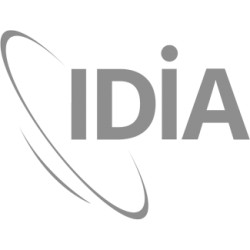The advent of very large telescopes, and their increasingly complex and voluminous data products, means digital astronomical data now needs special treatment to be understood. Simple two-dimensional graphs can no longer adequately portray the massive amounts of data pouring in from huge radio interferometers like ALMA, ASKAP, LOFAR, MeerKAT and soon the SKA, which perceive signals in higher spatial and time resolution over a wide range of frequencies. Processing this data demands powerful computing resources, and bespoke algorithms and tools. The resultant radio images, particularly when combined with multiwavelength images from other facilities, require special software to allow scientists to visualise and conduct scientific analysis.
One such tool is CARTA (Cube Analysis and Rendering Tool for Astronomy), a new interactive visualisation tool that has been developed to handle terabyte-sized images, bringing together the functionalities necessary to interpret and visualise what would otherwise take too long, or simply be impossible to render. Hundreds of astronomers worldwide have already started using CARTA. Among them are astronomers involved in SKA-related research and some SKA Observatory scientists, including Dr Shari Breen.
“CARTA is already game-changing for astronomers who are looking at SKA precursor and pathfinder data – without it I would struggle to view huge data cubes from ASKAP” says Dr Breen, who conducts research on star formation. “CARTA is a hugely valuable tool in understanding the data, diagnosing problems and conducting our science.” Recognising that it was time to create a new generation tool for big data astronomy, CARTA started out on the drawing board in 2014, growing out of Professor Russ Taylor’s CyberSKA project1. The first release was made in December 2018, and the number of users is rapidly expanding
worldwide.
CARTA adopts a client-server architecture which is suitable for visualising images with large file sizes. Computation and data storage are handled by remote enterprise-class servers or clusters with high-performance storage, while processed products are sent to science users for visualisation with modern web features, such as GPU-accelerated rendering. This architecture also enables users to interact with the ALMA and VLA science archives by using CARTA as an interface. The software is designed to be memory-efficient when loading images. With around a gigabyte of RAM, a 16k x 16k square pixel image or terabyte image cube can be
loaded in seconds, which is a speed increase of up to 1,000 fold (depending on the application being compared).
Figure 1 (at the top of the page) demonstrates the power of CARTA on image matching, where astronomers can overlay images of the same area of sky taken with different telescopes with different characteristics, and this works well especially for wide field images. The background raster is a radio image at 36.528 MHz, the white contours are HI and the green contours are H_alpha. Three reprojected regions of interest are added.

Figure 2 (above) demonstrates some of CARTA’s region analytics tools, and also shows the catalog support in CARTA. This neatly depicts the flexible layout of CARTA which allows the user to determine the position and look of many user interface components.
The next release (2.0) in the next few months will improve publication quality output, Stokes analysis (which allows astronomers to measure polarisation), and add many new features. See here for instructions on how to access CARTA and for more details.” CARTA is also supportive of SKAO’s joint effort with the IAU, ESA and ESO to develop accessibility guidelines for astronomy software to improve access for disabled users.
1The CARTA project is an international collaboration of the Inter-University Institute for Data Intensive Astronomy (IDIA), South Africa; the Academia Sinica Institute of Astronomy and Astrophysics (ASIAA) in Taipei, Taiwan; the National Radio Astronomy Observatory (NRAO) in Socorro, US; and the Department of Physics, University of Alberta, Canada.
Credit: This article was originally published in Issue 7 of Contact Magazine published by the Square Kilometre Array.
Top Image Credit: CARTA (interface)/NASA Goddard/LAMBDA (science images).
Middle Image Credit: CARTA (interface)/NASA (raster image)/ PAWS Project (contour image)/SIMBAD (catalogue file).
